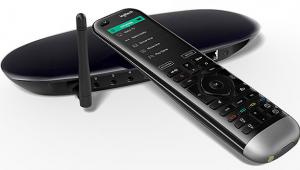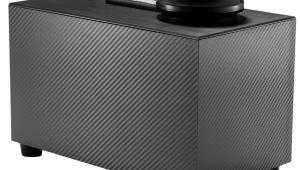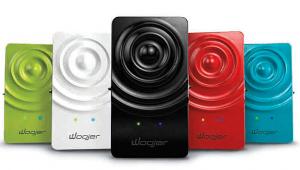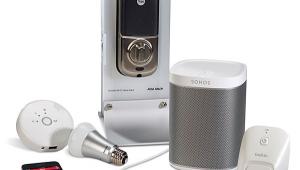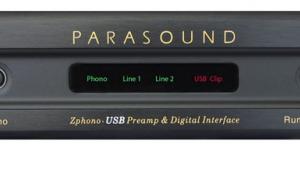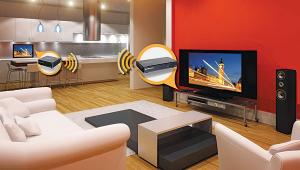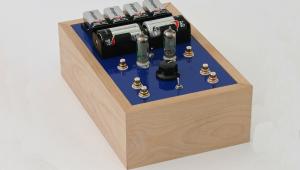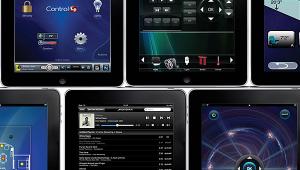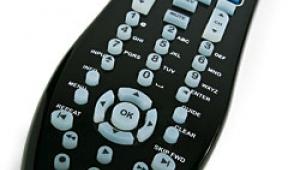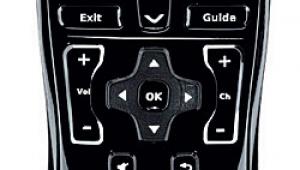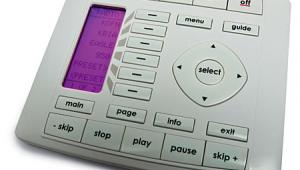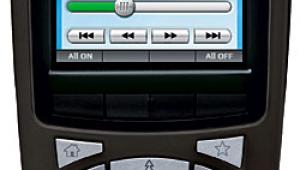PureLink HD-150 1:5 HDMI Distribution Amplifier, HS-42A 4:2 HDMI Selector, HDC Fiber Optic HDMI Extension Cable Page 2
One problem I encountered, however, was that the HD-150 went blank when it was placed between the source and an HDMI switcher in another product, in this case the excellent switcher in the Denon DVR-4306 receiver. I tried this because I wanted to test the ability of the HD-150 to pass audio as well as video downstream. This is important when you're using a receiver or pre-pro that is able to tap the audio that rides with the video on the HDMI link. But because the HD-150 would not lock onto the display in this pre-switcher position, I was unable to confirm its audio pass-through capabilities.
But the HD-150 did pass video when I positioned it in the HDMI signal path after the Denon and just before the display.
I did try a second tactic to test HDMI audio from the HD-150. I connected the source directly to the HD-150, and then fed one of the PureLink's distribution outputs to the display and another to the Denon just for the audio. Sounds like an obvious solution, but while the picture locked on with this setup, the audio still would not.
It would not be fair to blame the HD-150 for its inability to work in series with another HDMI device between it and the display. But the clear lesson here is that to insure full compatibility, any HDMI switcher or distribution amp should be tested in the specific system in which it is to be used, including any other HDMI switchers or splitters that will be placed before or after it in the signal path. Given such compatibility, the HD-150 provides superb video performance.
HS-42A HDMI Selector
The HS-42A's case is much like the D-150's, though slightly larger. It also uses an identical 5V power adapter. The front panel provides an indicator LED for the selected input, a power on LED, the main power switch, and a switch for a manual selection of input. A small, wireless remote control is also included. Around back are the four HDMI input jacks and two HDMI outputs (the version of HDMI is not specified).

In addition to audio via HDMI, the selector is also specified to transcode the audio from the HDMI lead to both its standard digital coaxial and Toslink outputs. (This can only work with two-channel PCM, standard Dolby Digital and standard DTS, since the SPDIF connection is not designed to carry multichannel PCM or any of the new audio codecs).
There is also an RS-232 connection on the back panel to allow the HS-42A to be controlled by a computer.
Our first sample initially appeared to be defective. The remote would not work, though the front panel input selector switch did. One of its HDMI outputs worked but the other did not.
PureLink send out a second sample, and initially I had trouble with that one, as well. But it appears that the hookup sequence in the owner's manual must be followed closely for the unit to work (the manual does need to be more specific about the importance of following this procedure in order). When I did that, with my Toshiba HD-A1 HD DVD player as a source, the second unit worked fine! It also continued to work with that source, and driving both projectors, when I randomly disconnected and reconnected the inputs, outputs, and power.

But it refused to pass an image from the Pioneer Elite BDP-HD1 Blu-ray player, even with the correct start-up sequence. As a cross check, I swapped the HD-150 back into the system with the Pioneer as a source and no other change to the setup. The picture popped onto the screen.
In one subsequent session, I actually got the first sample to work with both sources—even without consciously following the correct turn-on sequence. But it later became unpredictable again with the Pioneer player.
With the Toshiba HD-A1, the HS-42A worked consistently no matter which order I turned on the player, display, or Selector. I could not get any audio from the HS-42A's digital audio output, which (as noted earlier) is designed to tap the audio from the HDMI lead and route it to the Selector's digital audio outputs. And as with the HD-150, it would not pass the HDMI signal—audio or video—when positioned between the source (the Pioneer Blu-ray player) and the HDMI input of the Denon AVR-4306 receiver. It didn't like having an additional HDMI switcher between it and the display(s).
While it does appear a little fussy with respect to the source it's used with, and you should follow the specific sequence in the manual when first hooking it up, the HS-42A did provide superb video performance—comparable to that of the HD-150—when used as a switcher and distribution device.
HDC Fiber Optic HDMI Extension Cable
The HDC looks much like any other HDMI cable, though marginally thicker. But there's one important difference. On each end of the cable, about a foot beyond the HDMI connector, there's an HDMI-to-fiber-optic (or the reverse) converter box. It's 2.5" long, half an inch in height and width, and is very light so it does not stress the HDMI connection. But even its small size might be a concern if the cable is to be routed through walls or ceilings.

Each of the converter boxes has two blue LEDs that indicate the presence of a signal. In addition, the box at the source end (be sure and hook the HDC up in the right direction—it won't work the other way!) has a connection for another of those 5V power modules (provided). For most systems, you won't need to use this; the cable will power itself from the source signal. But if your source is weak, the power module will provide adequate boost. I didn't need it.
The 100-foot HDC I was sent generally worked fine with all of my disc sources and my test pattern generator. The picture looked great—equivalent to that from any functioning length of standard HDMI cable I have used.
But the first time I used the HDC, with my Toshiba HD DVD player as the source, the image blanked out for an instant every few minutes. The intervals were unpredictable and non-repeatable, but the blanking occurred at least three times. Later, this behavior ceased on both the Toshiba player and the Pioneer BD player. Why it occurred at all remains a mystery—and a minor concern.
Conclusions
I can recommend both the HD-150 and the HDC cable. Yes, they are expensive, but not in the context of a high-end home theater. They do perform superbly. But as with any HDMI chain, I do recommend you confirm that they will play and work well with the rest of your system before you make any final purchase decision.
The HS-42A provides excellent video performance, and will potentially appeal to a wider range of users than the other two products reviewed here. But it appears to be more selective about the associated HDMI equipment it's used with.
Highs
Outstanding video performance (all)
Not much competition for what they do (all)
Superb for long runs (HDC)
Lows
Won't pass a signal with another HDMI device between them and the display
(HS-42A and HD-150)
Operation with different associated HDMI equipment can be unpredictable
Did not work consistently with all HDMI sources tried (HS-42A)

